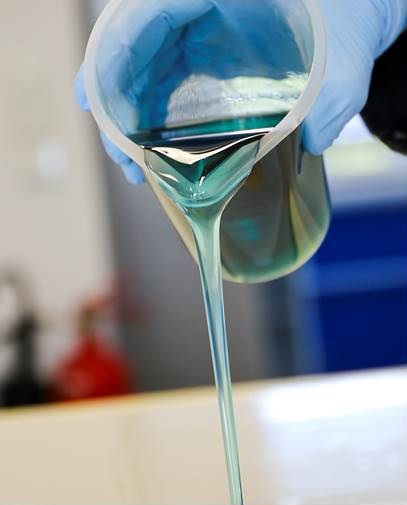Fibre-reinforced plastics usually have high specific stiffness and strength. This makes them suitable materials for lightweight construction. They are used in aviation, marine, wind energy, rail vehicle construction and many other industries. However, in their application they are exposed to enormous environmental influences which can have a detrimental effect on their service life: Temperature fluctuations, humidity, UV radiation, mechanical stress, salts or other chemical compounds. The consequential damage is often not visible and is not noticed, but this can have fatal consequences. Therefore, comprehensive knowledge of the properties of fibre-reinforced plastics is necessary as well as the possibility of professional repair.
We asked Claas Hoffmann, head of practical training in the field of fibre composite technology, what the challenges and current trends are and what the decisive difference is between repair and production.
Mr. Hoffmann, what would you like to give the users from the practice?
Each damage case is very individual and therefore it is difficult to define a standard procedure for each repair. It is much more due to the experience of the personnel, who have to guarantee the best quality repair with the given possibilities. The adaptation of the repair to the external conditions makes high demands on the personnel. This aspect in particular requires a very high level of technical understanding, in addition to manual skills. In production, on the other hand, in most cases these parameters are positively influenced in favour of quality and economy.
Where do you see an urgent need for action?
Many industries are adapting their repair processes and materials to new developments in research. For example, curing times are becoming shorter and shorter and curing temperatures lower and lower in order to ensure high-quality repairs even under adverse environmental conditions or when working in places that are difficult to reach. In addition to the already high demands on personnel, these developments pose new challenges. For this very reason, further training offers for these topics are of utmost importance
What outlook do you want to venture into the future?
Due to their lightweight construction potential, fiber-reinforced plastics already contribute to sustainable development in a great many applications. Nevertheless, further efforts are being made to use more sustainable and bio-based systems. Some of these systems have already made the leap from research to development and are used in various products - and are therefore increasingly included in our training courses. However, since development in the repair sector is usually somewhat delayed in relation to production development, new findings and materials from research and development are often not considered until much later. As soon as more sustainable materials are represented in a broader field of application, the repair processes will also adapt to this trend. Continuous further training of the personnel can prevent knowledge gaps from arising in the first place.
Many thanks for the interview!
